The educational foundation of Guangxi University of Traditional Chinese Medicine is the Guangxi Provincial Nanning District Medical Research Institute established in 1934. The school was founded in 1956 and renamed Guangxi College of Traditional Chinese Medicine in 1958. It was upgraded to Guangxi College of Traditional Chinese Medicine in 1964 and Nanning Medical College in 1970. Incorporated, it was officially renamed Guangxi University of Traditional Chinese Medicine in March 2012 with the approval of the Ministry of Education. It is a national basic capacity building university in the central and western regions and a university jointly established by the State Administration of Traditional Chinese Medicine and the Guangxi Zhuang Autonomous Region. The school mainly focuses on the discipline of traditional Chinese medicine, with coordinated development of medicine, science, engineering, management and other disciplines. It has distinctive characteristics of traditional Chinese medicine and ethnic medicine. It has a close integration of industry, academia and research, and has outstanding advantages in external exchanges and cooperation. It has 3 schools: Xianhu, Mingxiu and Beihu. There are two campuses, covering a total area of more than 1,300 acres. There are 16 colleges and 3 directly under the public teaching department. There are 15 affiliated hospitals (including 3 directly affiliated hospitals and 12 non-directly affiliated hospitals), 1 affiliated traditional Chinese medicine school, 1 pharmaceutical company, and 1 independent college. There are a number of industry-university-research bases and teaching practice bases that have certain influence in the industry across the country, such as Chongyang City Apartments for the Elderly. The school has achieved remarkable results in the construction of the teaching staff. The school adheres to the direction of socialist school running, fully implements the party's education policy, adheres to the central position of teaching, and vigorously implements the strategy of "strengthening the school with talents and revitalizing the school with quality". The school has a teaching staff with rich teaching experience and reasonable structure. There are currently 1,144 full-time teachers, 81 doctoral supervisors, and 856 master's supervisors. Teachers with doctorate degrees account for 46.68%. It has a number of national, provincial, departmental and school-level high-level talent training bases (projects). In the past five years, 58 people have won national-level talent projects or honorary titles, and 124 people have won provincial-level talent projects or honorary titles. There are 3 masters of traditional Chinese medicine, 1 member of the first batch of academic departments of the China Academy of Chinese Medical Sciences, 4 nationally renowned Chinese medicine practitioners, 2 national Chinese Medicine Outstanding Contribution Awards, 23 recipients of special government allowances from the State Council, 2 National Hundred Thousand Talents Project winners, and 2 national There are 54 instructors who are inheritors of famous old Chinese medicine academic experience, 5 young Qihuang scholars, 8 national outstanding clinical talents of Chinese medicine, 4 national outstanding teachers, 1 national famous teaching teacher in Chinese medicine colleges and universities, and 3 Ministry of Education New Century Excellent Talents Support Plan 7 people including "Light of the West" visiting scholars from the Organization Department of the Central Committee of the Communist Party of China. The quality of talent training has improved rapidly. The school currently has more than 17,000 full-time students and 25 undergraduate majors, including 1 national comprehensive reform pilot major, 3 national-level specialty majors, and 2 outstanding doctor (TCM) education and training plan reform pilot projects. There are 4 first-class undergraduate major construction sites at the national level, 12 first-class undergraduate major construction sites at the autonomous region level, 2 first-class undergraduate courses at the national level, 40 first-class undergraduate courses at the autonomous region level, 9 high-quality specialty majors (groups) at the autonomous region level, autonomous region There are 8 integrated construction projects of grade-level specialty majors and experimental training teaching bases (centers). There are 1 national-level traditional Chinese medicine experimental demonstration center, 1 national-level traditional Chinese medicine clinical teaching and training demonstration center, 4 autonomous region-level experimental teaching demonstration centers, 3 autonomous region virtual simulation experimental teaching centers, and 1 autonomous region mass entrepreneurship and innovation demonstration base. The graduate employment rate and graduation destination implementation rate remain generally stable, and the quality of employment continues to improve. It has been awarded the title of "Outstanding Unit for Employment of Graduates from General Colleges and Universities in Guangxi" for 15 consecutive years. In recent years, the school has won 1 national-level teaching achievement award, 25 autonomous region-level teaching achievement awards, and completed 4 professional certifications from the Ministry of Education. Steady development of discipline construction. The school is a doctorate-granting unit, with 1 first-level discipline authorized for doctoral degree, 6 first-level disciplines authorized for master's degree, 1 professional doctoral degree category, 5 professional master's degree categories, and second-level discipline authorized for master's degree. 43 are universities with master's degree promotion and exemption qualifications; there are 11 national key clinical specialties, 15 key traditional Chinese medicine disciplines of the State Administration of Traditional Chinese Medicine, and 22 key specialties of the State Administration of Traditional Chinese Medicine; there are 3 first-class disciplines in Guangxi, Guangxi's advantages There are 4 characteristic key disciplines, 6 Guangxi key disciplines, 2 Guangxi characteristic disciplines in ethnic colleges, and 55 Guangxi key disciplines of traditional Chinese medicine (including training). In the latest ESI ranking in 2022, the school’s clinical medicine discipline ranks among the top 1% in the world. The school has made fruitful scientific research achievements. Focusing on the research of traditional Chinese medicine and Zhuangyao medicine, the school signed a contract with the Autonomous Region Science and Technology Department to set up the Guangxi Natural Science Foundation Traditional Chinese Medicine and Zhuangyao Medicine Joint Special Project. It took the lead in applying for the Guangxi Traditional Chinese Medicine and Ethnic Medicine Industry Science and Technology Special Project to help promote Western traditional Chinese medicine. Billion-yuan industrial development. Strengthen the construction of scientific research innovation bases and technological innovation platforms. Guangxi Traditional Chinese Medicine Scientific Experiment Center is one of the largest innovation sharing platforms for traditional Chinese medicine and ethnic medicine in the country. There are 1 national clinical research base of traditional Chinese medicine, 3 key research laboratories of the State Administration of Traditional Chinese Medicine, 4 third-level key laboratories of traditional Chinese medicine research, 5 key laboratories of Guangxi Zhuang Autonomous Region, 8 key laboratories of Guangxi universities, Guangxi Health There are 4 key laboratories (including cultivation) of the Health Committee. There are currently 1 national characteristic service export base (TCM), 1 Ministry of Education Engineering Research Center, 2 autonomous region engineering research centers, 2 autonomous region engineering technology research centers, 3 Guangxi Collaborative Innovation Centers, and 1 Guangxi Technology Transfer Demonstration Institution. 1, 1 Guangxi Intellectual Property Training Base, 1 Guangxi Science and Technology Innovation Service Provider; approved as "China-ASEAN Traditional Chinese Medicine Health Industry International Innovation Center", "Beibu Gulf Economic Zone Traditional Chinese Medicine Industry High-level Talent Training Base", "Traditional Chinese Medicine 3 talent projects including the South China Branch Center of the National Engineering Research Center for Solid Preparation Manufacturing Technology. Since 2018, the school has organized applications for 9,220 scientific research projects at all levels and of various types; it has obtained 3,256 project approvals and contract funding of 30,866.5.67 million yuan. Published 9,584 academic papers, including 1,201 SCI papers; published 235 books. There are 240 valid authorized invention patents, 471 utility model patents, and 20 design patents. It has won 186 awards at the department and bureau level and above, including 2 second prizes of the National Science and Technology Progress Award as the main completing unit. The school has obvious advantages in social services. The school aims to serve the economic development of ASEAN countries and regions with scientific and technological achievements, and uses the establishment of a scientific and technological innovation platform as a carrier to comprehensively promote the transformation of the school's scientific and technological achievements. The school was entrusted by the government to compile the "14th Five-Year Plan for the Development of Traditional Chinese Medicine in Guangxi" and actively participated in the government's drafting of the "Regulations on Traditional Chinese Medicine of the Guangxi Zhuang Autonomous Region", the "Guangxi Zhuang Autonomous Region's Decision to Accelerate the Development of Traditional Chinese Medicine and Ethnic Medicine" and "The Revitalization of Zhuang Yao Medicine". Plan" and other series of documents related to traditional Chinese medicine and Zhuangyao medicine, helping Yulin City, Hezhou City, Shanglin County, etc. prepare development plans for traditional Chinese medicine and general health industries, and actively carry out research on the quality standards of Zhuangyao medicine and a census of traditional Chinese medicine and ethnic medicine resources in Guangxi , provide talent and intellectual support for the realization of Guangxi's pharmaceutical industry of 100 billion yuan, and help promote the development of Western and traditional Chinese medicine, ethnic medicine, and the general health industry. From 2018 to 2022, a total of 22 teachers from the school were selected as national and autonomous region-level rural science and technology commissioners. During the service period, they provided on-site science and technology services for a total of more than 1,330 days (including round-trips), conducted more than 120 technical trainings, and conducted more than 20 free medical clinics. . The school leverages the unique advantages of traditional Chinese medicine and actively participates in the prevention and control of COVID-19 infection. It has received a total of 7 special emergency funding projects in Guangxi and 2 special COVID-19 prevention and control projects under the National High-end Foreign Experts Introduction Plan. The school makes full use of its talents and technological advantages, actively carries out technical assistance work with grassroots hospitals, establishes a health assistance base, carries out activities such as "rotating village doctors" and the introduction of traditional Chinese medicine culture into campuses, communities and villages, to provide high-level services to the people. The diagnosis and treatment services have greatly alleviated the problem of "difficulty in seeking medical treatment" for the masses, and have won widespread praise from the people. Cultural inheritance, innovation, and distinctive features. The school follows its roots and continues to expand, and always regards the inheritance and innovation of culture as its historical mission. In recent years, the school has focused on building a number of distinctive and powerful humanities research bases, which are national popular science education bases, autonomous region patriotism education bases, autonomous region traditional Chinese medicine culture publicity and education bases, and autonomous region traditional Chinese medicine health tourism demonstration bases. The school has conducted research on the medicines of Zhuang, Yao and other ethnic groups, established a quality standard system for Zhuang medicine and Yao medicine, published a series of monographs and textbooks, and has a number of national-level autonomous region-level intangible cultural heritages. In order to promote the excellent traditional ethnic culture, It has made new contributions to enhancing the international influence of national medical culture. The school attaches great importance to carrying forward and inheriting China's excellent traditional culture and traditional Chinese medicine culture, creating a campus cultural atmosphere with strong characteristics of China's excellent traditional culture and traditional Chinese medicine culture, and has built a series of traditional Chinese medicine cultural landscapes that integrate the long-standing Chinese tradition with the profound Chinese medicine culture. As a whole, it shows a strong cultural atmosphere of traditional Chinese medicine and fully demonstrates the broad and profound unique charm of traditional Chinese medicine culture. The school with extensive international exchanges and cooperation is the talent training base of the China-ASEAN Traditional Medicine Exchange and Cooperation Center of the State Administration of Traditional Chinese Medicine. The school makes full use of its own school-running characteristics and advantages to serve the country’s “One Belt, One Road” initiative, and actively promotes cooperation and exchanges with other countries in traditional Chinese medicine and ethnic medicine, medical care, personnel training, scientific research and development, etc., and has established the China-Thailand Traditional Medicine Research Center Joint laboratories, China-Malaysia Traditional Chinese Medicine Center, China-Canada Zebrafish Joint Laboratory for Traditional Chinese Medicine Screening, China-Australia Joint Laboratory for Modern Research on Traditional Medicine, China-ASEAN Joint Laboratory for International Cooperation in Traditional Medicine Research, etc., actively promote cooperation with other Cooperation and exchanges between countries (regions) in traditional Chinese medicine and ethnic medicine, medical care, talent training, scientific research and development, etc. have formed a new pattern of foreign education centered on ASEAN countries and Hong Kong, Macao and Taiwan regions and radiating around the world. The school has established exchange study and further study cooperation relationships with 94 universities or institutions in 25 countries or regions, including the United States, Germany, and Canada, and has established a bridge for cooperation with the international medical community in education, medical care, and scientific research. In order to promote traditional Chinese medicine It has played an important role in internationalization, strengthening cultural exchanges and serving the national “Belt and Road” initiative. New era, new journey and new development. The school is based in Guangxi, faces the whole country, radiates to ASEAN, and goes global. It continuously improves the core competitiveness and educational level of the school. In order to build the school into a school with traditional Chinese medicine and traditional Chinese medicine as the main subject, medical science and engineering management collaboration, outstanding integration of industry, academia and research, and distinctive ethnic medicine characteristics. We strive to become a well-known domestic and regional first-class comprehensive high-level university of traditional Chinese medicine!
-

Tsinghua University
-

Peking University
-

Fudan University
-

Wuhan University
-

Zhejiang University
-

Nanjing University
-

Sun Yat-sen University
-

Tongji University
-

Renmin University of China
-

Jahrom University of Medical Sciences
-

Mesoamerican University
-

Istmo University
-
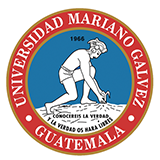
Mariano Galvez University of Guatemala
-
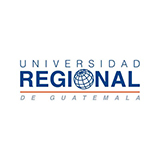
Regional University of Guatemala
-
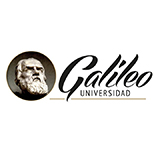
Galileo University
-
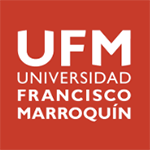
Francisco Marroquín University
-

Rafael Landívar University
-
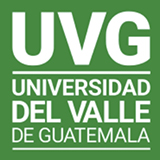
University of the Valley of Guatemala
-
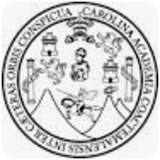
University of San Carlos of Guatemala
-

Technological Institute of Tlaxcala Plateau
-

Golfo University
-
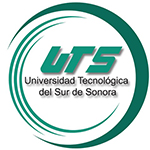
Technological University of South Sonora
-
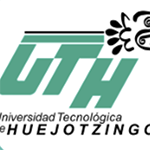
Technological University of Huejotzingo
-
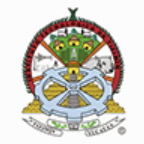
Tizimín Institute of Technology
-
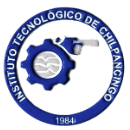
Chilpancingo Institute of Technology

